Another take on my now-famous old school cake recipe… This time we’ve gone for the Jam and Coconut School Cake version. Just as delicious, with or without the pink custard accompaniment!
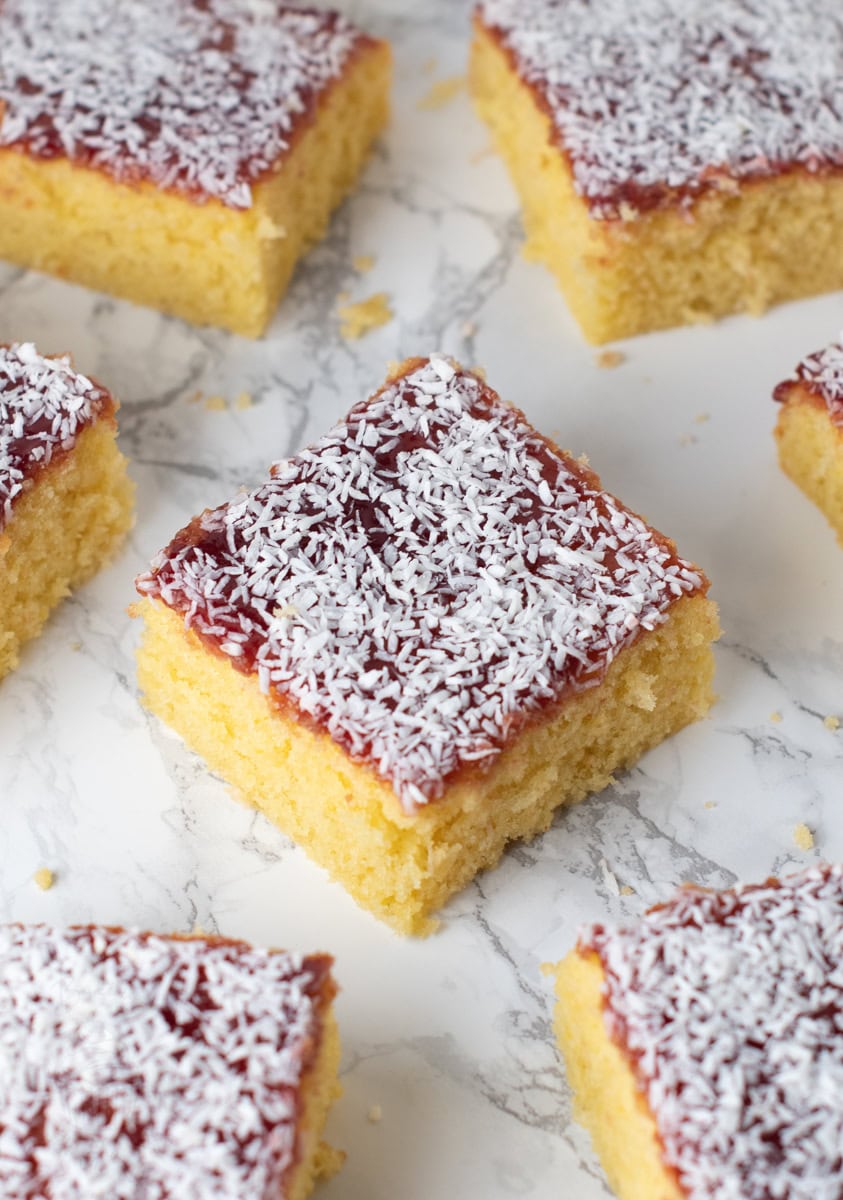
Let’s flash back to summer 2020. We’re mid-pandemic but between lockdowns in the UK. Baking with Granny has skyrocketed in the online world (with everyone being off work and baking, it was no surprise!), and I’m looking for a new recipe to share. Everyone is hankering back to their childhoods – easier times! And the thing I keep thinking back to was one cake I would eat as child… School Cake.
I’ve mentioned before that as a kid, growing up with Granny baking all day, every day, I wasn’t really a fan of home baking. Too much of a good thing, you could say!
But the one cake I would always look forward to was the school dinner cake, “lovingly” prepared by our school dinner ladies. The plainest sponge you could get, topped with white icing and sprinkles. Often served with custard and a favourite with all generations. It’s no wonder that the one cake I always remember loving as a kid is the long-standing favourite recipe here on Baking with Granny.
I could never have predicted just how crazy people would go for School Cake, and the feedback for it has been amazing. One recurring question I get, though, is whether I could also do a recipe for the jam and coconut version. People pleasing is in my nature – as I think it is with most bakers – so your wish is my command!
This Jam and Coconut School cake recipe uses the same formula for success as our famous sprinkle School Cake recipe. A simple, light & tasty sponge – in huge quantities! Topped with some tasty favourites. But instead of white water icing and rainbow sprinkles, we opt for some seedless jam and desiccated coconut. A different flavour combination, but one that works oh-so-well.
For serving, custard is optional. I personally think this version of school dinner cake is better suited for a drowning in custard, but it’s entirely your choice. As is whether the custard should indeed be pink!
And if you love school dinners, take a look at my easy Cornflake Tart recipe.
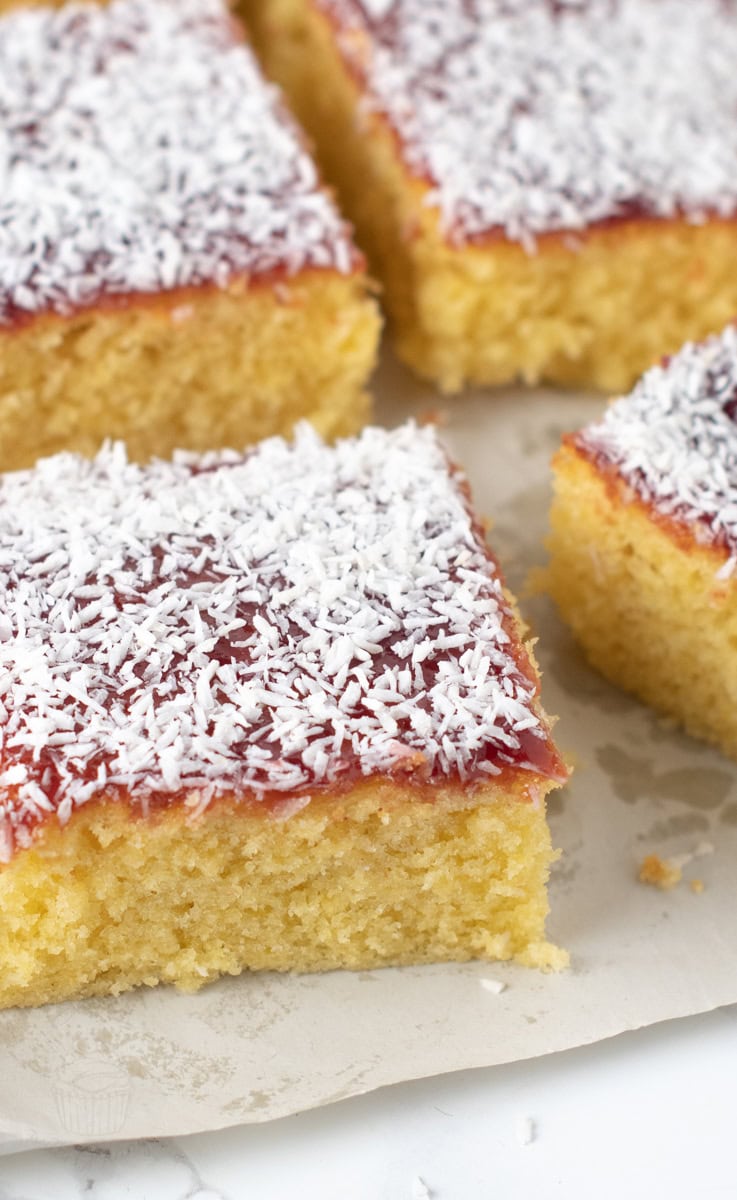
Ingredients for School Cake:
Margarine
Similar to our Victoria Sponge recipe, I recommend using margarine over butter for your cake batter. Some believe butter gives a better flavour overall to a cake, but margarine makes a better-textured and more predictable sponge. Plus, it’s pretty much guaranteed that any traditional school cake would have been made using margarine, mostly because it’s more cost-effective than butter.
As with all ingredients when baking a sponge cake, ensure it’s at room temperature before starting.
Caster Sugar
No one has ever claimed a School Cake is healthy, and the sweetness is probably why we all love it so much! Caster sugar is the sugar of choice here and is preferable to granulated sugar, as it is finer and mixes more evenly into the batter.
Free-range Eggs
Five eggs seem like a lot, but this is a big cake! The size of the eggs doesn’t matter too much (I always use medium), but just be sure you’re using free-range eggs.
As with all ingredients when baking a sponge cake, ensure they are at room temperature before starting.
Self-raising Flour
Again, flour is a must in a cake batter, and self-raising flour is used here to allow it to rise. No additional raising agents are required, but be sure to sift the flour: one, to remove lumps; two, to incorporate extra air into the flour.
Jam
This is where the ingredients differ from our classic icing- and sprinkle-clad school dinner cake. In terms of jam, it really comes down to personal preference. I am a raspberry jam girl, through and through. But strawberry is perfectly acceptable too, and probably what was used in most actual Jam and Coconut School Cakes. You can even go completely rogue and use a blackberry jam, or apricot jam.
One thing I do recommend, however, is using a seedless jam. It’s not an essential, but it does give your cake a better texture and allows the coconut to really shine through, without being lost in the texture of seeds.
Coconut
Desiccated coconut is what you want to be using. I use it straight from the packet, but you could go a bit extra and toast yours first. But if we’re going for authentic school cake vibes, the heroes who were dinner ladies didn’t have time to toast coconut for kids who would wolf it down regardless!
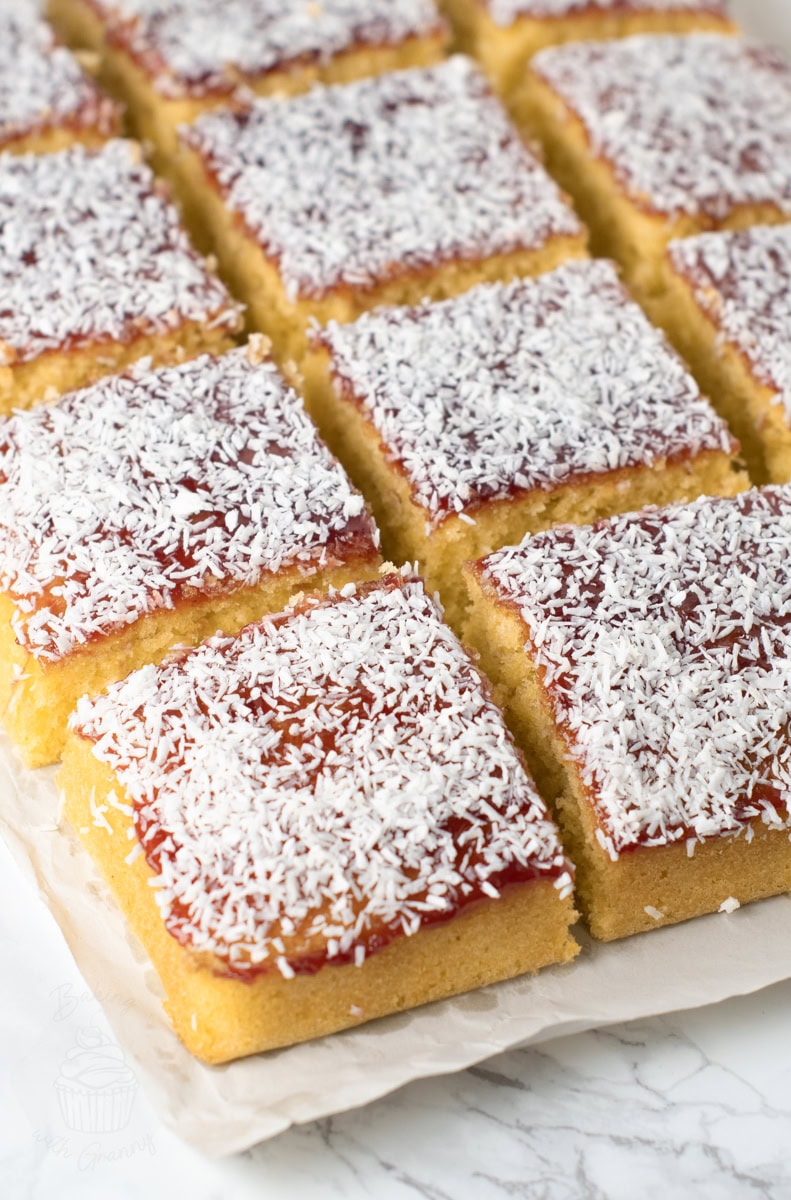
Top Tips for Old School Cake:
• Make Ahead the Sponge: Bake your sponge the night before you require it. Leave it in its greaseproof paper on a wire rack and place it into an airtight bag once cool. Decorate with the icing and sprinkles in the morning. This will give your cake a better texture overall – trust me!
• Use a Soft Margarine: Sponge cakes are one of the few recipes that you can not only get away with using a soft margarine in, but are actually better when you do. A soft margarine creates a softer, lighter and more predictable sponge cake. Stork is, of course, the classic and obvious choice
• Don’t Stress While Spreading: Don’t be too concerned if your jam starts to pull crumbs along while spreading. By the time you add your coconut, no one will even notice.
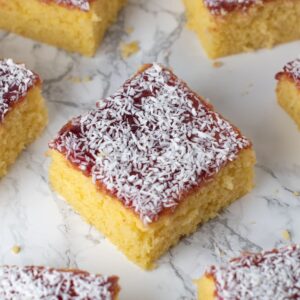
Jam and Coconut School Cake
EQUIPMENT
- 20x30cm Baking Tin (9x12 inch)
INGREDIENTS
- 280 g Soft Margarine at room temperature
- 280 g Caster Sugar (Superfine Sugar)
- 5 Free-range Eggs at room temperature
- 280 g Self-raising Flour
- 300 g Seedless Jam (Seedless Jelly)
- 100 g Desiccated Coconut (Shredded Coconut)
INSTRUCTIONS
- Preheat your oven to 180°c (160°c for fan-assisted ovens, Gas Mark 4 or 350°F) and a line 20x30cm (12x9-inch) baking tin with greaseproof paper. Set aside.
- In a large bowl, cream together the margarine and sugar until light and fluffy.
- Add the eggs one at a time, ensuring each is mixed through before adding the next. If the mxiture appears to curdle, simply add a spoonful of your flour to bring it back togther,.
- Sift in the flour and gently fold to create a batter.
- Transfer the batter to your pre-lined tin and bake in your preheated oven for 30-40 minutes until risen, golden and a skewer inserted comes out clean.
- Leave to cool in the tin for a short while before transferring to a wire rack to cool completely.
- Once your cake has cooled completely; warm your jam for about 20 seconds in a microwave (this isn't essential but it does make it easier to spread). Spread your jam over the top of your cake, being careful to get right into the corners and edges. Sprinkle your coconut over the top of your jam to finish.
IMPORTANT NOTE:
All my recipes are developed using a digital scale and the metric system (grams and millilitres). Cup measurements are available as a conversion but these, unfortunately, won't always be as accurate. For best results, I always recommend baking with a digital scale.
RECIPE NOTES:
- Storage: Store your Jam and Coconut Cake in an airtight container at room temperature. It’ll keep well for up to 4 days, if it lasts that long!
- Freezing: You can freeze the sponge before adding the jam and coconut. Wrap it tightly in cling film and foil, and freeze for up to 3 months. Defrost at room temperature, then finish with jam and coconut before serving.
- Serving: For full school dinner nostalgia, serve with a drizzle of custard (pink or otherwise!).
How to make Jam and Coconut School Cake?
Can I use butter instead of margarine?
Can I use plain flour (all-purpose flour) instead of self-raising flour?
Can I bake this in a different sized tin?
Free-from & Vegan:
Gluten-free: To make this a gluten-free school cake, substitute the flour with a high-quality gluten-free self-raising flour blend. Adding ¼ tsp of xanthan gum can help the texture, especially if your blend doesn’t already include it.
Dairy-free: To make this a dairy-free school cake recipe, simply ensure your margarine is dairy-free.
Egg-free: You could experiment with egg replacers, such as aquafaba or flaxseed-egg, in this school dinner cake recipe. However, I haven’t tried this myself, so I can’t say for sure which option will work best.
N.B. Any advice or suggestions to make recipes “free-from” or vegan are purely that – suggestions. Please be careful to double-check all ingredients individually, taking extra caution when serving to those with allergies & intolerances.
For more info on common food allergies, please see food.gov.uk | For more info on coeliac disease, please see coeliac.org.uk | For more info on a vegan diet, please see vegansociety.com
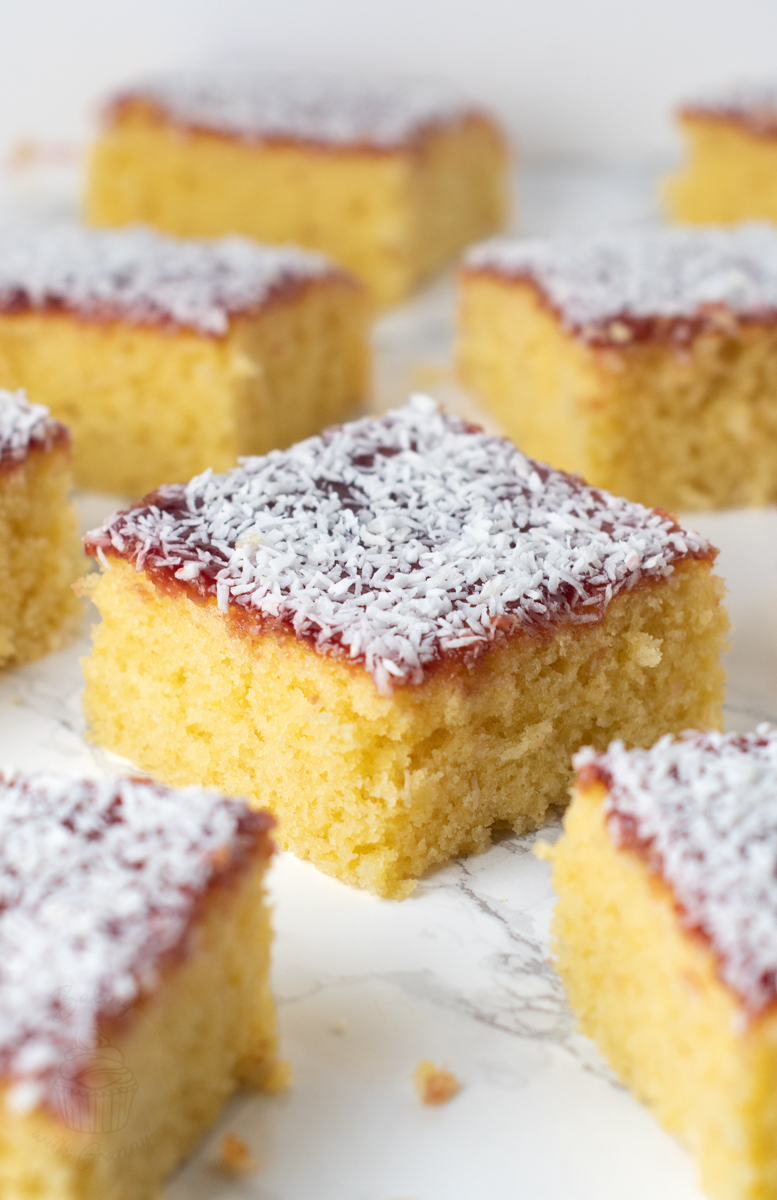
Originally published in November 2022. Updated in July 2025.





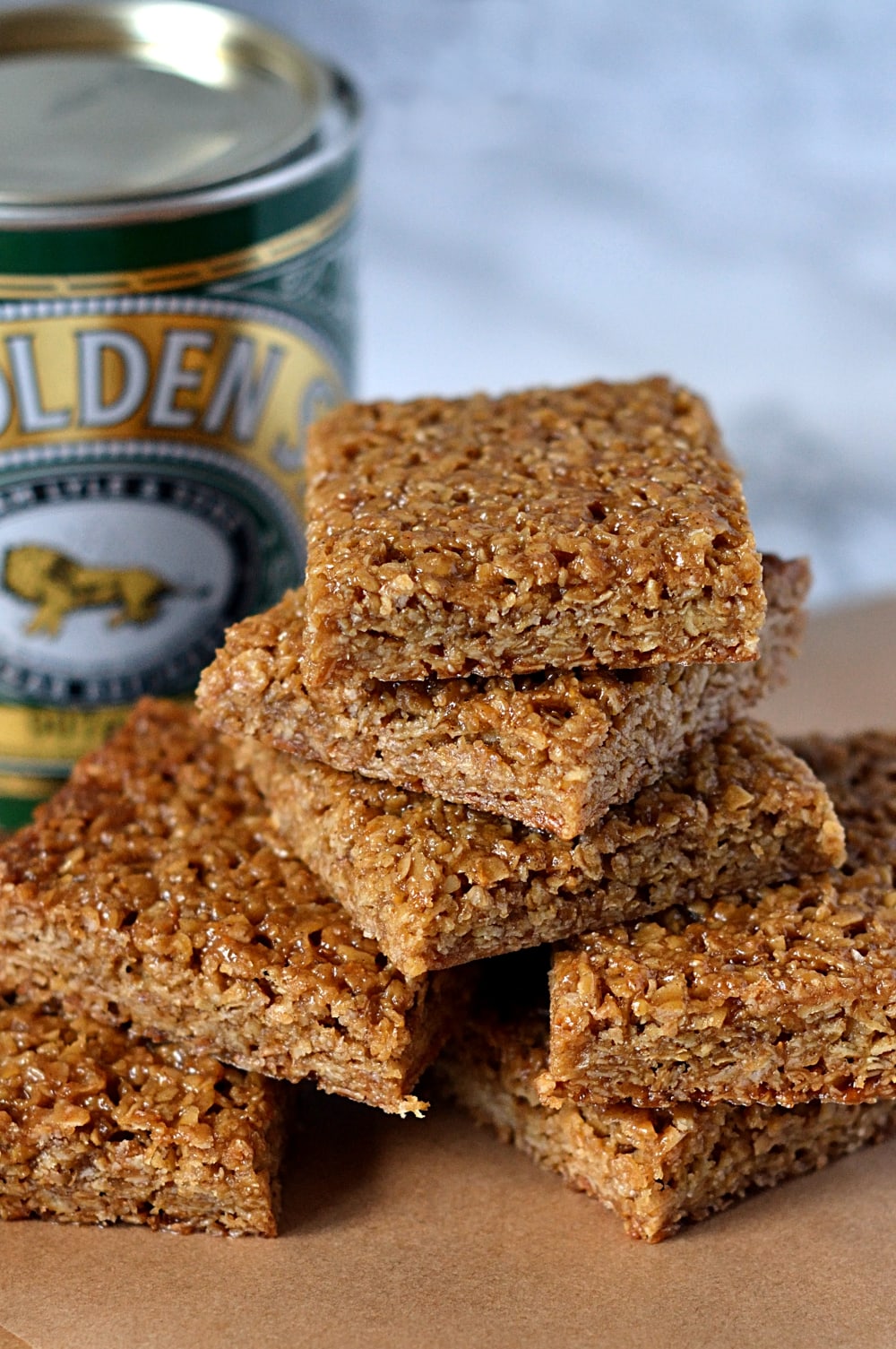

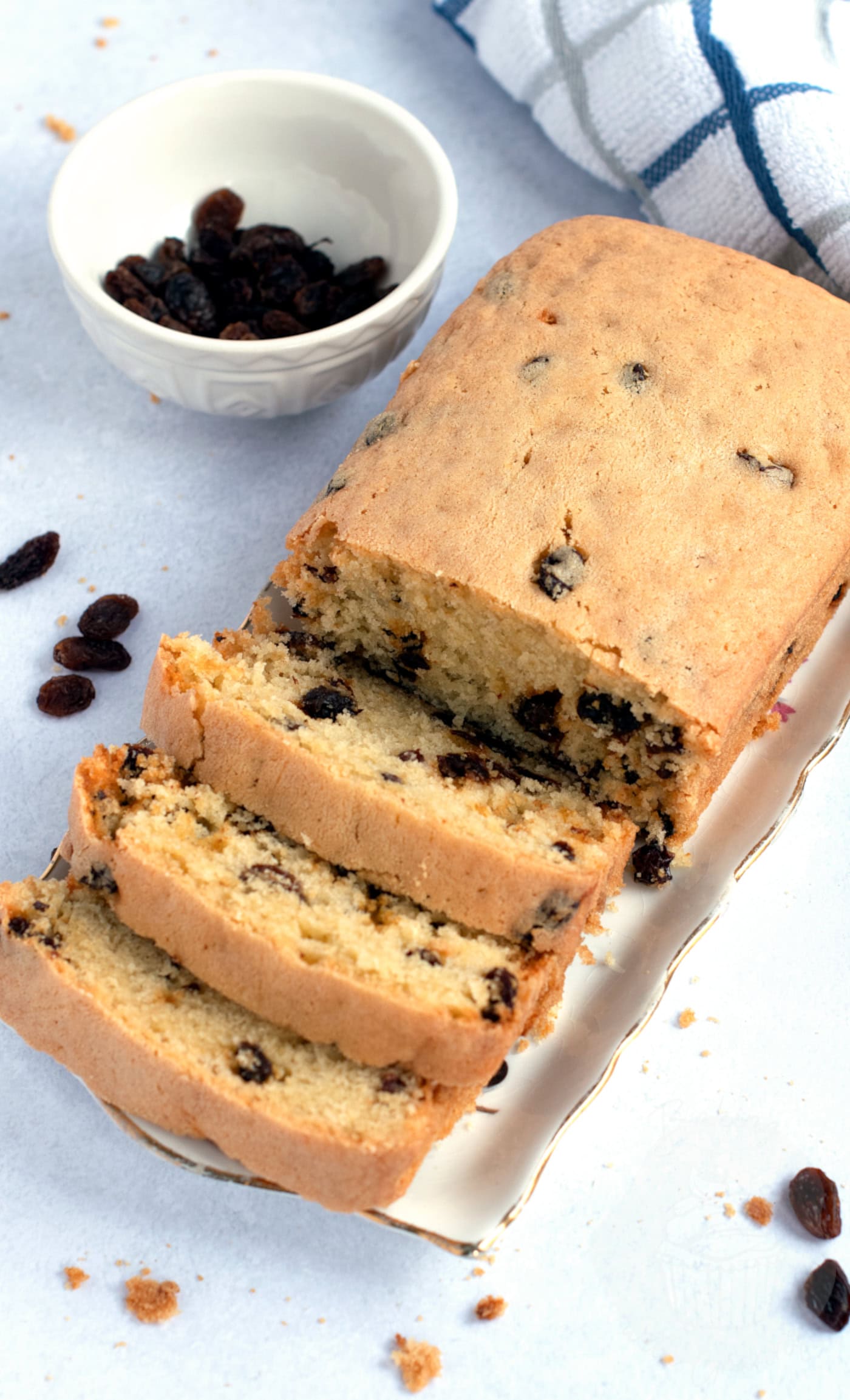
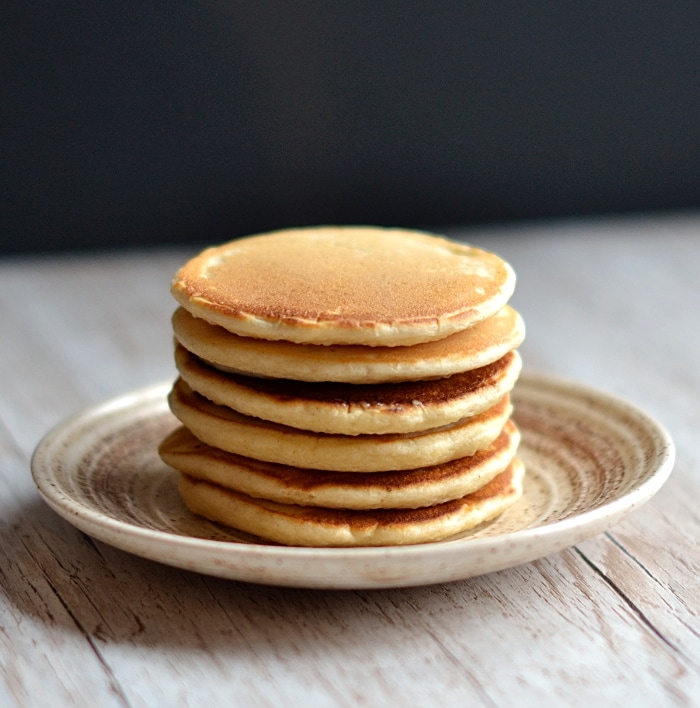
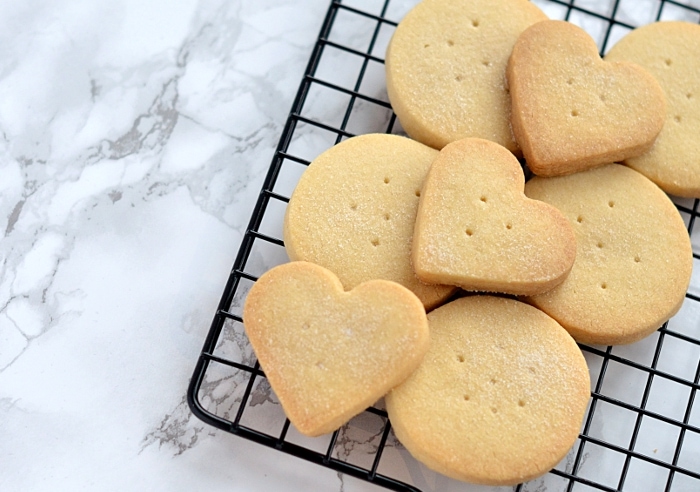








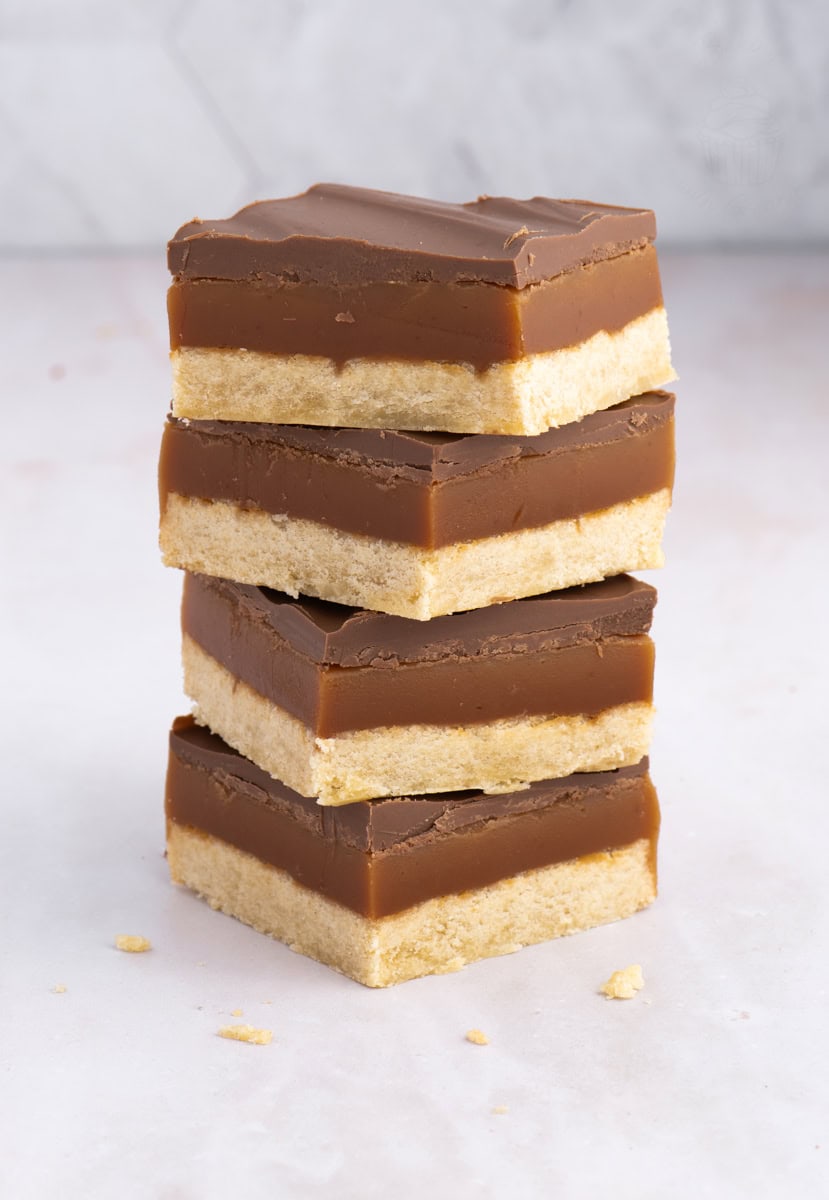

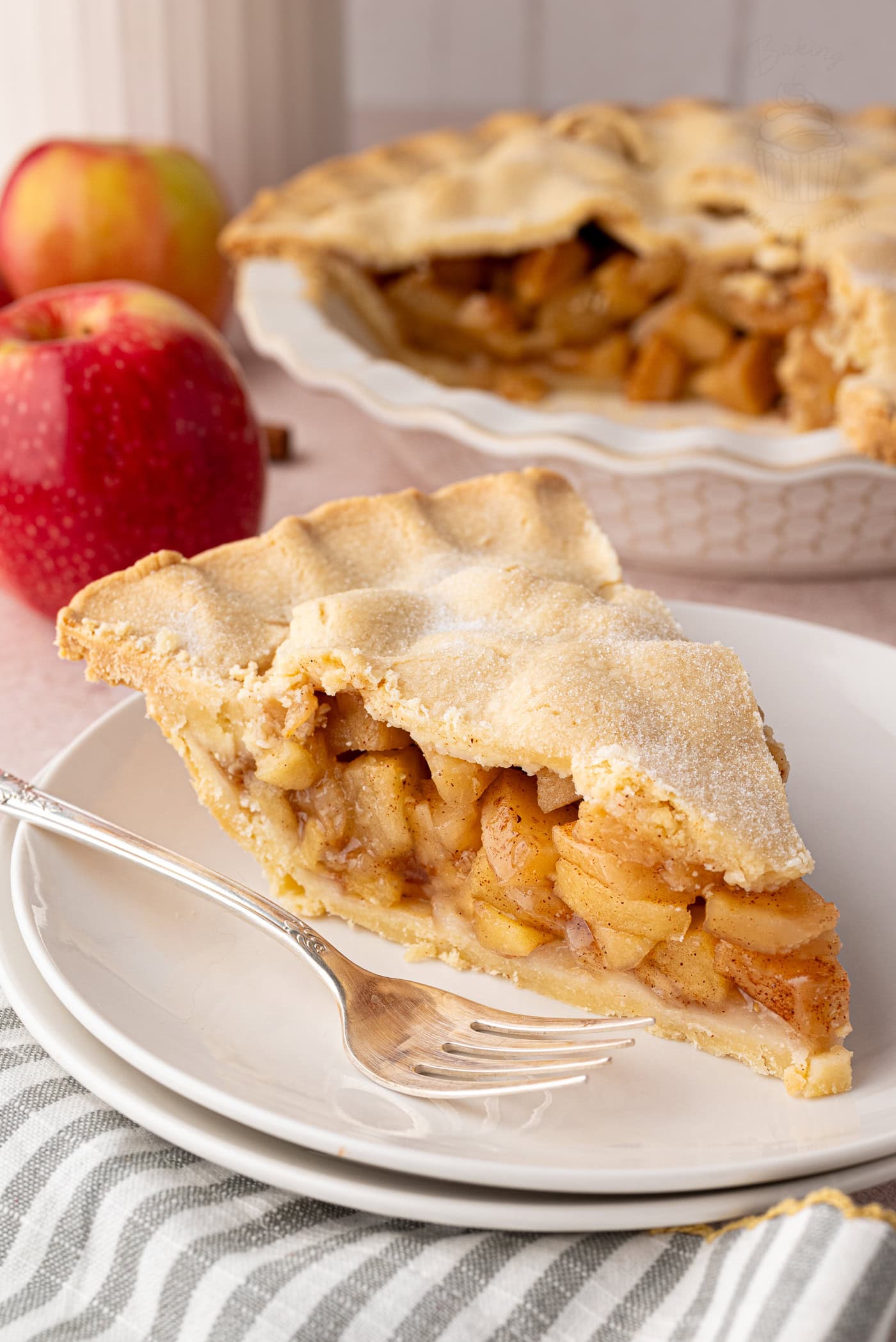


14 responses
What a treat ! Thank you.
I love your recipes and have tried many of them all will success. This one is no exception, the sponge has good rise and is lovely and light and moist. I made one tray and iced one side as per your other school cake recipe and the other with jam and coconut, both delicious.
I’m going to do the same..
Awesome memory’s luv em
What size pan do you use?
Says 9x12inch pan
So lovely! Thank you, it was perfect. Will make again and again
Love the recipe. I’m just curious which jam flavour did you used?
The most delicious cake remember my school days getting this all my children love this cake very easy to make and not buying any cakes now save money thanks for recipes
This was a hit with two of the family, the rest of us (3) thought it tasted “eggy” could I use less eggs and some milk maybe?
I had the same impression! I would weight my eggs next time and make sure it equals the flour and suga and butter weight
Love this…made it loads of times now, always a smash hit…
Hi Amy I’ve made this tray bake millions of time my grown up kids love it to bits but I wanted to ask can I use this recipe as birthday cake plz x
Fabulous. Can you make this ahead of time and freeze the sponge cake?
I’m going to try your sultana cake next .